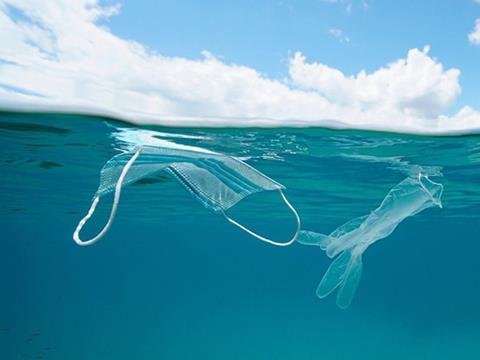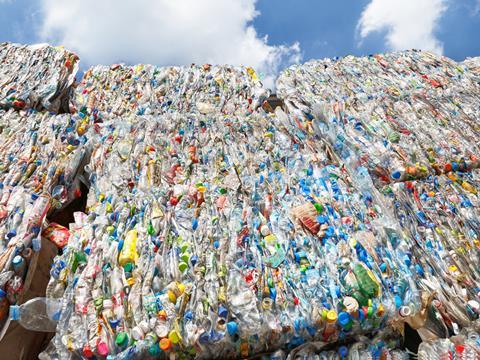
In this article, TOMRA gives its views on how the current pandemic can support a green recovery, as well as a transition to a circular economy for plastics.
The COVID-19 pandemic has brought with it a wave of consequences for areas such as health, the global economy, the environment, and supply chains. Alongside this, there has been a rise in the challenges around plastic and plastic waste, which for several years have been growing as a different kind of global crisis.
The outbreak of COVID-19 has seen an increased demand for single-use plastics - such as disposable face masks, gloves, packaging from a rise in online retail sales, and takeaway containers and utensils as restaurants switch from dine-in to take-away. This plastic is necessary for public health but is unsustainable for the environment.
The turbulence of the current global situation demonstrates why we should be future-proofing all kinds of supply chains, including packaging and plastics. As the recovery from the pandemic begins, we must support supply chains to become green and continue the transition to a circular economy. The global economy is starting to show signs of bouncing back; however, we must not get caught in the trap of falling into old habits around waste.
COVID-19 has started to cause delays or push-back on plans to transition for plastics to a circular economy, a system that keeps products, components, and materials at their highest value throughout their life cycles within a closed loop. Deposit return schemes (where consumers receive a refund when they return empty drink containers for recycling) have been postponed in Scotland and Western Australia, and the UK government has put plans to ban plastic stirrers, straws, and cotton buds on hold. In the US, there are campaigns attempting to overturn the current bans on plastic bags in retail.
But, if anything, now is the time for society to make the changes we have been talking about to save our planet, and there is no time for delays. We must use the pandemic as a chance to accelerate change. The current situation gives society, businesses, and governments an opportunity to reassess behaviour and reflect on what direction they should move in and continue in a way that is not damaging our environment. The need for action to support the green recovery has also been reiterated by UN Secretary-General António Guterres, who stated that the pandemic offers a "real opportunity to do things right for the future."

Accelerating the transition to a circular economy for plastics
This pause in “normality” must be a signifier for change. Let’s use the time to transition to a circular economy and focus on the adjustments that society needs to make to enable this.
For plastic, the circular economy begins with the design of products and packaging and ensuring all plastics are made with a view to being reused or recycled in a continuous loop. Currently, only 2% of all plastic packaging remains in a closed recycling loop, so emphasis must be placed on the need for packaging manufacturers to design packaging for recycling so the material can be reused.
As well as changing packaging design, a mindset needs to be developed to further encourage and promote recycling. Plastic needs to be treated as a quality material that can be reused in the production of new plastic and not as waste. Although negative perceptions of plastic are rising, it is a very useful material; the problem is in the way the material is mishandled once used. We need to change consumer perceptions of plastic, promote understanding of recycling, and encourage recycling habits.
Driving change through planning and legislation
To make a significant impact, we need plans that are supported by legislation to encourage the transition to a circular economy. A leading charge is the EU’s new Circular Economy Action Plan – Europe’s new way toward a climate-neutral, competitive economy of empowered consumers.
The latest initiative from the EU focuses on the entire lifecycle of a product, looking at the initial design process, the sustainable consumption of products, and ensuring that resources within the EU economy are kept within the loop. The plan focuses on the sectors which use the most resources and where there is the potential to create circularity with their use and reuse.
Plastics and packaging are important areas where the EU is looking to create key value chains to support both a circular economy and the green recovery. The plan focuses on driving the transition through research, innovation, and digitalization to create a cleaner and more competitive Europe, which is key to supporting a green recovery.

A green recovery wouldn't just help the environment and get us on track to tackle climate change, it would also help economic recovery through the creation of jobs. A recent Greenpeace report highlights that, if properly funded, a green recovery could create around 1.8 million jobs in the UK, which is a huge opportunity given the current recession.
The economy leading the green recovery
During the pandemic, the global economy has been severely impacted due to lockdown restrictions forcing businesses to change how they operate. However, as the economy begins to recover, it brings the risk of falling back into old habits when it comes to handling waste.
These recent times have seen an increase in single-use plastics only due to necessity, but the pandemic presents the chance to trigger behavioral change around waste. It gives society, businesses, and governments a huge opportunity to reassess the design, consumption, and handling of waste products and packaging. This opportunity must be taken to create efficient systems that enable the circular economy for plastics.




















